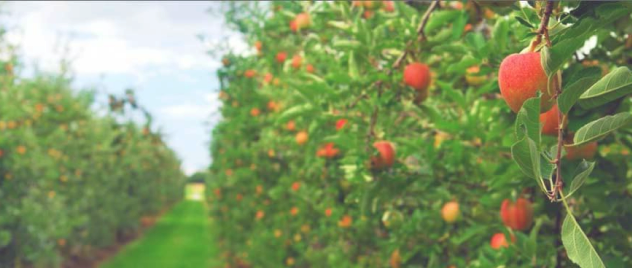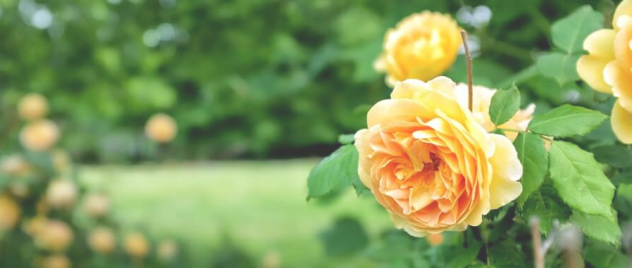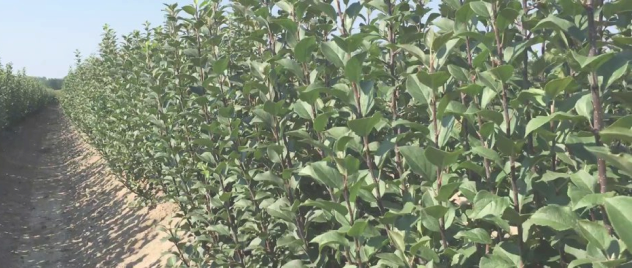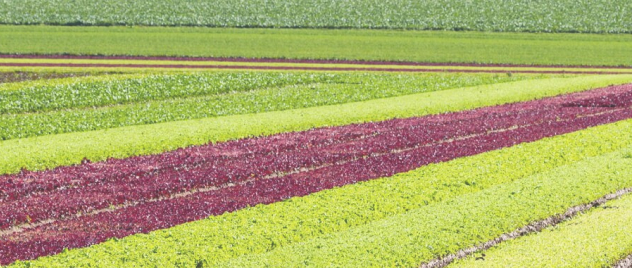RED CURRANT
Red currant (Ribes rubrum) is a deciduous shrub that belongs to the Grossulariaceae family. It is native to parts of Europe, Asia, and North America and is highly valued for its vibrant clusters of tart, translucent red berries. Red currants are popular for culinary purposes, used in jams, jellies, desserts, and beverages. They are also enjoyed fresh, offering a refreshing balance of sweetness and acidity. The red currant bush is known for its attractive foliage, featuring lobed, dark green leaves that turn shades of yellow and red in the fall. Its compact size and ornamental value make it a welcome addition to home gardens and landscapes.
RED CURRANT
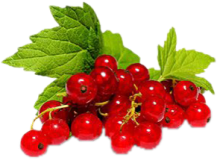
CULTIVATION
Red currants thrive in cool temperate climates and are well-suited for regions with distinct seasons. They prefer well-drained soil and full to partial sun exposure. Red currant plants are relatively low-maintenance and can tolerate a wide range of soil conditions, including loam, clay, or sandy soil. They require regular watering, particularly during dry periods, to promote healthy growth and fruit development. Pruning is essential to maintain plant vigor, shape the bush, and improve air circulation, which helps reduce disease pressure. Red currant bushes are hardy and can withstand cold winters, making them suitable for cultivation in colder regions.
GROWING SYSTEMS
Red currant bushes have a compact and upright growth habit, reaching a height of 1 to 1.5 meters (3 to 5 feet) at maturity. They are typically grown as standalone bushes, and their growth can be further supported by the use of appropriate training and pruning techniques. Here are a couple of common growing systems for red currants:
Bush System:The bush system is the most common method of growing red currants. In this system, the plants are allowed to grow naturally into a bushy form without any particular training. The branches develop from the base of the plant, and the foliage creates a dense canopy. This system is suitable for home gardens and smaller orchards, as it requires minimal intervention and allows for easy access to the berries.
Trellis System: Red currant bushes can also be trained along a trellis system for improved support and easier management. The branches are selectively pruned and tied to the trellis, allowing for better airflow, sunlight penetration, and efficient harvesting. Trellising can be especially beneficial for larger-scale commercial cultivation, as it facilitates mechanization and simplifies tasks such as pruning, pest control, and harvesting.
TYPICAL SPACINGS
The spacing between red currant plants may vary depending on the specific cultivar, available space, and management practices. Here are some typical spacings for red currant cultivation:
Bush System: For the bush system, red currant plants are typically spaced between 1 to 1.5 meters (3 to 5 feet) apart in both the row and between rows. This spacing allows the plants to develop a bushy form and provides sufficient airflow and sunlight for each plant.
Trellis System: When growing red currants along a trellis system, the spacing between plants may be slightly closer. Typically, plants are spaced around 60 to 90 centimeters (2 to 3 feet) apart in the row and 1.5 to 2 meters (5 to 6.5 feet) between rows, depending on the desired trellis design and the vigor of the cultivar being grown.
See our full SELECTION of RED CURRANT PLANTS we have in our offer
JONKHEER VAN TETS
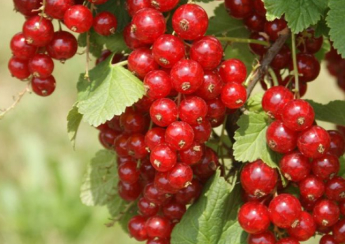
PLANT:
Jonkheer van Tets red currant is a vigorous and productive variety known for its upright growth habit and hardiness. The plants are medium to large in size and have an open and spreading canopy of dark green foliage, providing an attractive backdrop to the vibrant clusters of red currants. They are adaptable to various soil types and can tolerate colder climates.
POLLINATORS:
Jonkheer van Tets red currant is a self-fertile variety. However, planting another compatible red currant variety nearby can enhance cross-pollination and potentially increase yields for optimal fruit production.
FRUIT APPEARANCE:
The Jonkheer van Tets red currants are medium-sized and have a vibrant, translucent red color. They grow in tight clusters along the branches and are highly regarded for their exceptional flavor and tartness.
HARVEST:
Jonkheer van Tets red currants are typically ready for harvest in mid to late summer. The berries ripen uniformly, allowing for efficient and convenient picking. The plants offer a generous yield, ensuring a plentiful harvest.
COMMERCIAL USE:
Jonkheer van Tets red currants are valued for their excellent quality and versatility. They are perfect for fresh consumption, adding a burst of tanginess to fruit salads, desserts, and beverages. They are also popular for use in jams, jellies, sauces, and baked goods. The bright color and zesty flavor of Jonkheer van Tets red currants make them a favorite choice for both home gardeners and commercial growers.
RED DUTCH
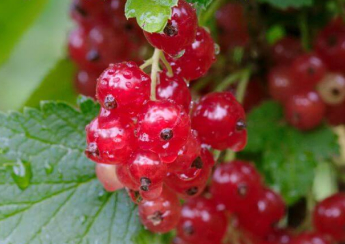
PLANT:
Red Dutch red currant is a robust and reliable variety known for its compact growth habit and high productivity. The plants are medium-sized and have a dense canopy of dark green foliage, providing an attractive backdrop to the abundant clusters of vibrant red currants. They are adaptable to various soil types and can tolerate both cooler and warmer climates.
POLLINATORS:
Red Dutch red currant is a self-fertile variety. However, planting another compatible red currant variety nearby can enhance cross-pollination and potentially increase yields for optimal fruit production.
FRUIT APPEARANCE:
The Red Dutch red currants are small to medium-sized and have a bright, glossy red color. They grow in tight clusters along the branches and are highly regarded for their sweet and slightly tart flavor. The berries have a firm texture and a delightful burst of juiciness, making them perfect for fresh consumption and culinary applications.
HARVEST:
Red Dutch red currants are typically ready for harvest in mid to late summer. The berries ripen uniformly, allowing for efficient and convenient picking. The plants offer a bountiful yield, ensuring an ample supply of these delicious red currants.
COMMERCIAL USE:
Red Dutch red currants are valued for their exceptional taste and versatility. They are perfect for enjoying fresh, adding a pop of sweetness to fruit salads, desserts, and breakfast dishes. They are also popular for use in jams, jellies, sauces, and various culinary creations. The vibrant color and delectable flavor of Red Dutch red currants make them a favorite among both home gardeners and professional growers.
ROVADA

PLANT:
Rovada red currant is an outstanding variety known for its vigorous growth and high yield. The plants are medium to large in size and have an upright, open growth habit. They feature attractive, lobed dark green foliage that serves as a beautiful backdrop to the abundant clusters of bright red currants. Rovada plants are adaptable to various soil types and are well-suited for colder climates.
POLLINATORS:
Rovada red currant is a self-fertile variety. However, planting another compatible red currant variety nearby can enhance cross-pollination and potentially increase yields for optimal fruit production.
FRUIT APPEARANCE:
The Rovada red currants are large and have a vibrant, glossy red color. They grow in long, well-filled clusters along the branches, showcasing their enticing beauty. The berries have a firm texture and a pleasantly tart flavor with a hint of sweetness. Rovada red currants are renowned for their exceptional taste and are highly sought after by both fresh consumers and culinary enthusiasts.
HARVEST:
Rovada red currants are typically ready for harvest in mid to late summer. The berries ripen uniformly and are easy to pick, making the harvesting process efficient. The plants produce an abundant yield, ensuring an ample supply of these delectable red currants.
COMMERCIAL USE:
Rovada red currants are prized for their exceptional quality and versatility. They are perfect for enjoying fresh, either as a standalone snack or incorporated into fruit salads, desserts, and beverages. They are also highly regarded for their culinary applications, such as making jams, jellies, sauces, and baked goods. The large size, vibrant color, and delicious flavor of Rovada red currants make them a favorite choice for both home gardeners and commercial growers.
ROLAN
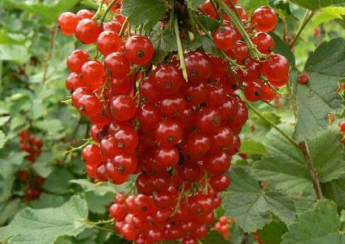
PLANT:
Rolan red currant is a reliable and productive variety that is highly regarded for its compact growth habit and disease resistance. The plants are medium-sized with a bushy and upright form, making them easy to manage in both home gardens and commercial settings. They have attractive dark green foliage that enhances the overall aesthetic appeal of the plant.
POLLINATORS:
Rolan red currant is a self-fertile variety, meaning it does not require a separate pollinator for fruit production. However, planting another compatible red currant variety nearby can help improve cross-pollination and potentially increase yields.
FRUIT APPEARANCE:
Rolan red currants are medium-sized with a rich, deep red color that is visually striking. The berries grow in tight clusters along the branches, adding to their allure. They have a slightly tart flavor balanced with natural sweetness, making them a delightful treat for fresh consumption. The berries have a firm texture, allowing them to hold up well in various culinary preparations.
HARVEST:
Rolan red currants are typically ready for harvest in mid to late summer. The berries ripen uniformly, facilitating efficient picking. The plants offer a good yield, ensuring an abundant supply of these flavorful red currants.
COMMERCIAL USE:
Rolan red currants are highly versatile and sought after for both culinary and commercial applications. They are perfect for enjoying fresh, adding a burst of tangy sweetness to fruit salads, desserts, and baked goods. Additionally, they are well-suited for making jams, jellies, sauces, and other delicious preserves. With their appealing color and balanced flavor, Rolan red currants are favored by home gardeners, chefs, and food enthusiasts alike.
RONDOM

PLANT:
Rondom red currant is a vigorous and robust variety that is highly valued for its exceptional productivity and disease resistance. The plants have a compact and upright growth habit, making them suitable for gardens of all sizes. They feature attractive dark green foliage that adds to their ornamental appeal.
POLLINATORS:
Rondom red currant is a self-fertile variety, meaning it does not require a separate pollinator for fruit production. However, planting another compatible red currant variety nearby can help improve cross-pollination and potentially increase yields.
FRUIT APPEARANCE:
Rondom red currants produce clusters of medium-sized berries that are vibrant red in color. The berries have a glossy and smooth skin, enhancing their visual appeal. They have a pleasantly tart flavor with a hint of sweetness, making them versatile for both fresh consumption and culinary uses. The berries have a firm texture and hold up well in various recipes.
HARVEST:
Rondom red currants are known for their early ripening, allowing for an early harvest. The berries mature uniformly, making the picking process efficient. The plants yield abundantly, ensuring a plentiful supply of these delectable red currants.
COMMERCIAL USE:
Rondom red currants are highly sought after for their exceptional flavor and versatile uses. They are perfect for enjoying fresh, either on their own or as an addition to fruit salads and desserts. The tartness of the berries adds a delightful contrast to sweet dishes. Rondom red currants are also excellent for making jams, jellies, sauces, and syrups. Their vibrant color and distinctive flavor make them a popular choice among home gardeners and culinary enthusiasts.

